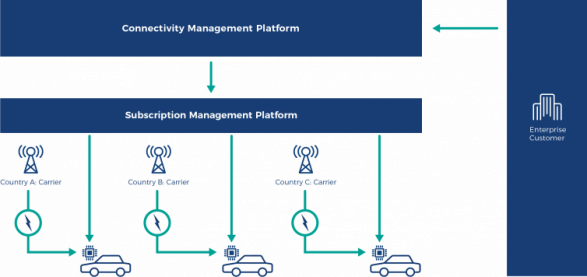How eSIM will Boost the IoT (Internet of Things)?
- Published
- 3 min reading

The embedded SIM (eSIM), or embedded universal integrated circuit card (eUICC), is changing connectivity in the Internet of Things (IoT). It matches the drive for minimalization and meets M2M needs, where factors such as temperature, water and shock resistance, as well as ease of access, need to be considered.
The eSIM for IoT is embedded in a device before it leaves the factory. Samsung’s Smartwatch Gear S2 Classic 3G and Apple’s iPad Pro 9.7 already use eSIMs, and from 2018 the European Commission implements them for emergency calls under its eCall initiative.
Apart from the abovementioned factors, SIM formats, supply and regulations have proliferated from device to device and country to country. Although traditional SIMs now come in pop-out form to fit regular, nano and micro slots, the eSIM does away with the requirement for such differentiation. It also saves money, because there is no need to ship a separate SIM, and a single device model can be shipped to all countries with out of the box connectivity guaranteed. The eSIM for IoT also automates MNO changes via over the air (OTA) management, so customers always get the best service. Finally, there’s the security aspect, as it’s impossible to steal an eSIM from a device.
With the eSIM and IoT, all interfaces, subscription management platforms and flows are based on one of two GSMA standards (M2M and consumer) backed by many operators, alliances (the M2M Alliance) and OEMs
Operators win because eSIMs open up new avenues for global business around the world, with lower costs, greater security, and the opportunity for up-selling and cross-selling. Enterprise customers save time and money, because connecting devices and complying with regulations and MNO specifications happens automatically. End users benefit from a device that can use the best network, and connectivity is more secure. And SIM manufacturers get access to new verticals on more valuable contracts.
Let’s see how the IoT eSIM works
A camera manufacturer in Europe produces devices for markets where various MNOs use different SIMs. With the IoT eSIM, only one model of camera need be produced. A customer who uses the camera and likes to travel a lot can choose their MNO or let the device do this automatically. The MNO itself can sign a contract with the manufacturer, ensuring its connectivity is included in all the company’s devices. And regulations can be handled automatically, where a traditional SIM might have to be replaced.
Elements of the eSIM/IoT ecosystem:

- Device, eSIM, asset, car or other with embedded element
- Network supporting connectivity services
- Subscription management data preparation and subscription management secure routing (SM-DP and SM-SR, as described by the GSM Association) to manage all profile actions
- Connectivity management platform (Comarch IoT Connectivity Management) to manage all connectivity, billing and tariffs from one place







